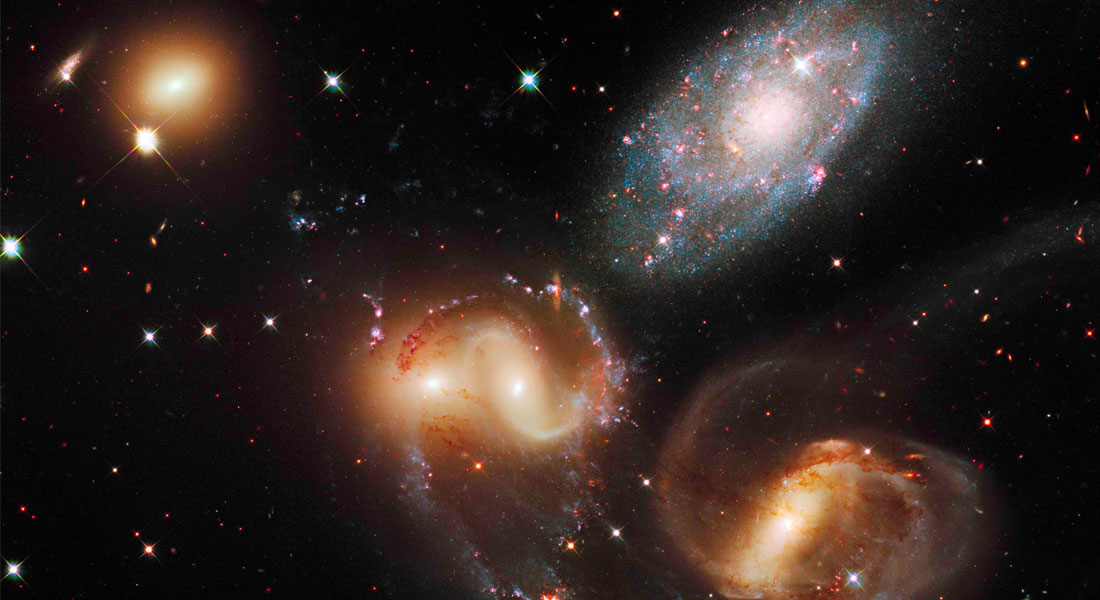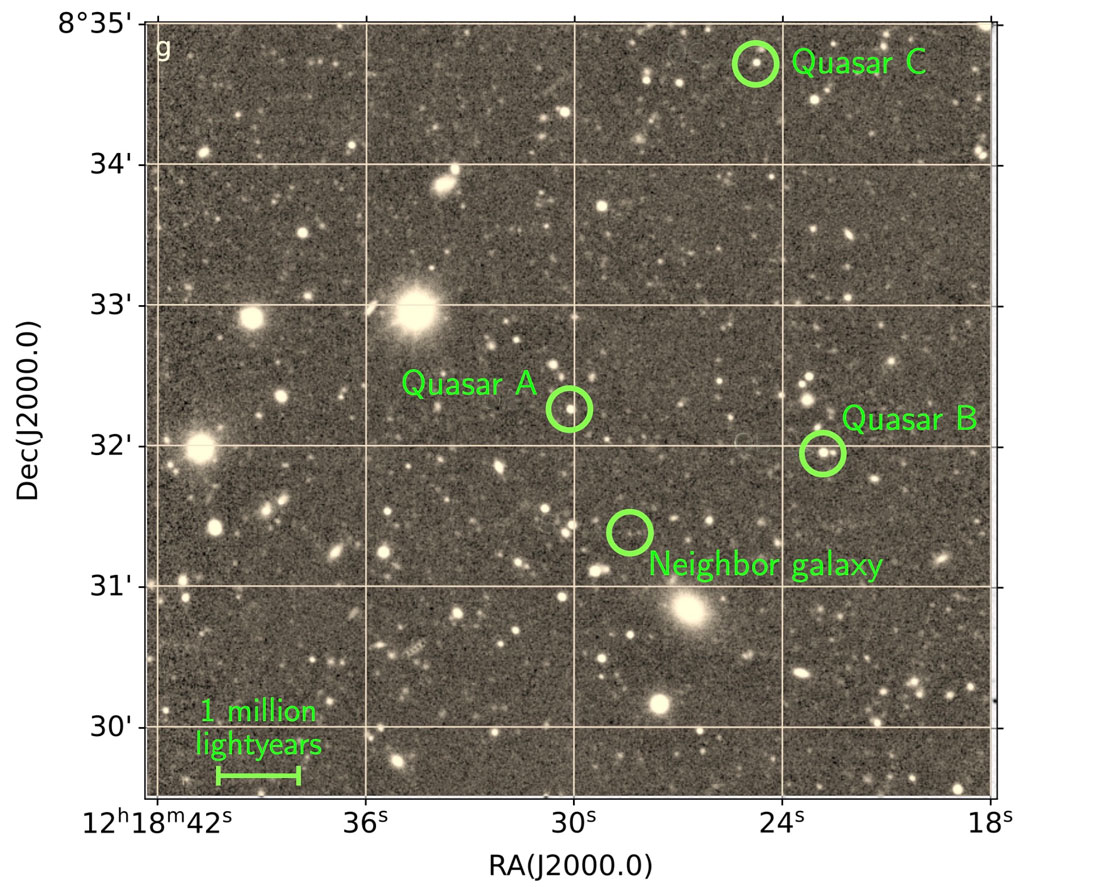A galaxy group in the early Universe
Using the Hubble Space Telescope, an international team of astronomers led by researchers at the Cosmic Dawn Center in Copenhagen, have investigated a galaxy seen almost 11 billion years back in time. Contrary to typical observations, the galaxy was discovered not by the light it emits, but by the light it absorbs. The galaxy itself evades observations, but has at least one nearby companion. Together, these galaxies comprise an early group which may later evolve to resemble the Local Group in which we live.

When we see things, we see them because they either emit light — such as the Sun or a flashlight — or because they reflect light emitted by someone else — such as the Moon or a bicycle.
This is usually also the way that we find galaxies near and far. Galaxies emit light across the full electromagnetic spectrum, and different telescopes can then detect different kinds of light.
But there is in fact another way, a complementary method that relies on a galaxy’s ability to absorb light.
Galaxies blocking the light
If a galaxy happens to be located along the line of sight to a more distant, bright light source, the galaxy will absorb some of the background source’s light. This absorption is caused by the gas and dust particles that lies in between the galaxy’s stars. The particles don’t absorb equally well at all wavelengths, however, but tend to absorb light at specific wavelengths.
If we then take a spectrum — that is, an observation that shows how much light we see at each wavelength — of the background “lighthouse”, we see distinct absorption “holes” in the spectrum, indicating that something is blocking the light.
Depending on the exact wavelengths where we see the “holes”, as well as exactly how much light is missing, we can then deduce various physical characteristics of the foreground galaxy.
The bright background source may in principle be another galaxy, or sometimes an exploding star, but is more often a quasar; the extremely luminous core of a galaxy with a supermassive black hole eating its surroundings.
A firefly in front of a stadium projector
The absorbed light reveals several of the physical characteristics about a galaxy, but not everything. If we want to know more about it, we can try and search for light emitted from the same region on the sky.
The problem? It’s placed exactly, or almost exactly, in front of the bright quasar. It is virtually like trying to observe a firefly in front of a stadium projector.
Nevertheless, that’s what Johan Fynbo, astronomy professor at the Cosmic Dawn Center in Copenhagen, likes to challenge himself with.
“To find absorbing galaxies, we first look for quasars that are particularly red,” explains Fynbo. “Because star dust tends to absorb the blue light but not the red, if there is a dusty galaxy in the foreground the quasar will be reddened.”
This approach has led Fynbo and his collaborators to detect multiple such absorbers. The next, and hardest, step is to look carefully for emitted light from the galaxy causing the absorption.
A doppelgänger of our local galaxy group?
Most recently, the team took on the quest for light from a particular absorber, seen almost 11 billion years back in time, and selected because it causes quite substantial reddening of a background quasar. This absorber is remarkable in the sense that it absorbs significantly more light than most others; a sign that it is a rather mature galaxy, perhaps similar to the Milky Way.
“The features that we found in the missing light tell us something about the dust in the foreground galaxy,” says Lise Christensen, associate professor at the Cosmic Dawn Center who also participated in the study. “In fact, the dust seems to resemble the dust that we see locally in the Milky Way and one of our neighboring galaxies.”
Alas, despite their effort the team were unable to detect a luminous counterpart of the absorber. Most likely it is located almost exactly in front of the quasar. On the other hand, they discovered another galaxy nearby — a galaxy which seems to be highly star-forming. And more may be out there.

The galaxies lie so close to each other that they are bound gravitationally, not being pulled apart by the expansion of the Universe. This means that, in the future, they will form a “galaxy group”, not unlike our Local Group which consists of the Milky Way, Andromeda, and a large number of smaller satellite galaxies.
“This makes the galaxies even more interesting to study,” says Johan Fynbo, who in the future plans to revisit the field with the Nordic Optical Telescope at La Palma and other telescopes — both with the aim of searching for other members of the group, and to hopefully unveil the galaxy giving rise to the absorption.
Contact
The article has just been accepted for publication in the scientific journal Astronomy & Astrophysics.
More info:
- Johan P. U. Fynbo
- Lise Christensen
- Article
- Fynbo et al. (2023), On the galaxy counterpart and environment of the dusty Damped Lyman-α Absorber at z = 2.226 towards Q 1218+0832, http://doi.org/10.48550/arXiv.2308.15781
- Related article: Geier, Heintz, Fynbo et al. (2019), Gaia-assisted selection of a quasar reddened by dust in an extremely strong damped Lyman-α absorber at z = 2.226, https://doi.org/10.1051/0004-6361/201935108
